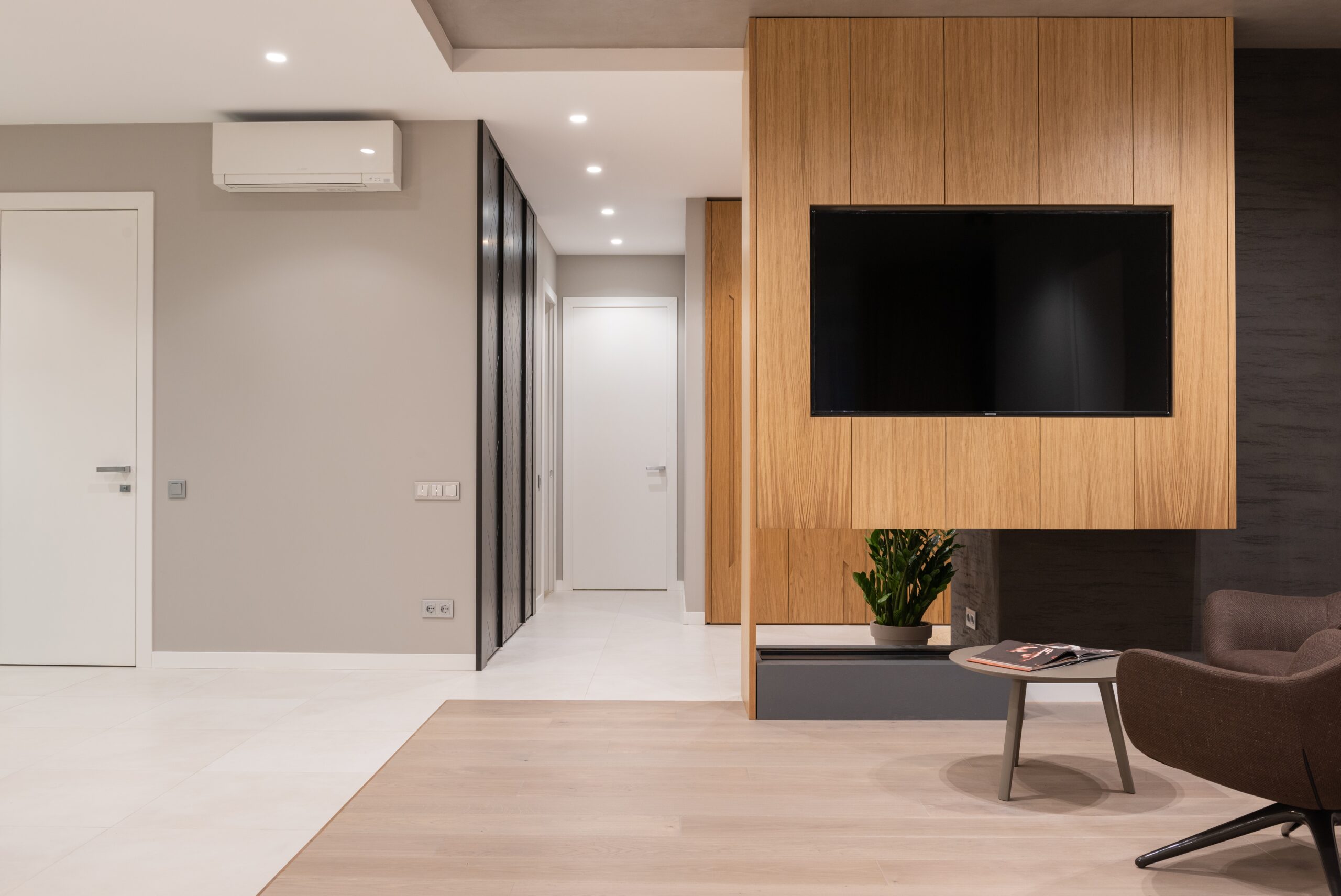Paintings usually draw attention, especially when the work is a true wonder. If you aim to place one at home, you can make it even more attention-grabbing with a sliding painting to reveal a hidden TV. With this, it’s not just a frame but also a screen.
The idea is a clever one. You get to save wall space; otherwise, you would have the painting and TV hanging in different areas. Not to mention the aesthetics of the painting sliding to reveal the TV. Without a doubt, any visitor seeing it for the first time will give a “wow.”
How do you actualize a sliding painting to reveal a hidden TV? That’s what we’ll be discussing here.
Steps to Set Up a Sliding Painting to Reveal a Hidden TV
The concept of a painting sliding to reveal a hidden TV may sound too technical. However, it’s more or less easy to set up. Follow the below steps, and you’ll have one working in no time.
Choose the right painting
Between the framed picture and TV, the latter will typically be more expensive. As a result, it’s easier to purchase a painting to match your TV than vice versa. In addition, you most likely already have a television you intend to use. Therefore, you should first hit the market to purchase the right painting.
The most important consideration is for the painting to be large enough to cover to conceal your TV. But that’s not all you need to factor in. Also, select a painting based on your home decor. At the end of the day, the painting remains visible when you’re not watching TV, so it must be eye pleasing.
If you can, making your own painting is an interesting route. You only need a canvas, paint, and a wooden frame.
Install the TV mount
Now, the wall where you intend to hang your painting should have an opening or compartment large enough to contain your TV. If you don’t have such, you must create one using a drill. An expert can help here since you need clean work and a level ground to hide your TV.
The compartment must be properly finished so it looks like every other wall section. Or, you can make it unique with wallpaper or different aesthetics. However, since you’ll most likely be using a flat-screen TV, it could be wide enough to blow people from seeing inside the compartment.
With the wall compartment handled, it’s time to install the TV mount. Brackets will work, too, if they fit your television size and weight. We advise using an adjustable mount, so you can sometimes tilt your TV to match your viewing angle.
Use the drill to puncture holes in the wall where you’ll place the mount. Then, add the parts and fasten them using sturdy screws, bolts, and others available. Confirm the mount is sturdy, then hang your television. You can connect the TV to a nearby power source and see if you love the view.
Install the sliding rail
You’ve successfully mounted the TV in a wall compartment. Subsequent efforts now go to setting up the sliding painting, which is the main part. You start by setting up the sliding rail (or vertical track system, if that’s what you have).
Mount the sliding rail outside the wall compartment, just at the top. Unless you want to manually lift the painting along the rail — which isn’t sliding, by the way — you’ll need an automated mechanism. With an automated system, your artwork can truly slide, and you won’t need to touch it. You simply press a remote button or switch.
Linear actuators are the best you can employ for this application. Note that it’s just the painting you want to slide, not the entire frame. Hence, you won’t need heavy motion devices in terms of force.
Connecting the linear actuator
We recommend a linear actuator for your sliding painting to reveal a hidden TV because you’ll have no trouble using it. At the same time, it’ll control the artwork to smoothly slide along the rail to reveal your television. For a demonstration of how this works, check the video on this page.
First, you’ll attach the motion device to the painting. Particularly, drill some holes at the top of the painting and then connect it to the nut of the actuator. Don’t worry; you won’t damage the artwork. The hole will be small such that the frame covers it completely.
Finish up by doing some wiring. You’ll connect the actuator to a power source and its receiver. The latter is essential because that’s how you control the sliding painting with a remote.
Attach the painting
The last step is to hang your painting on the wall. As mentioned, you’ll connect it to the linear actuator by drilling small holes at the top. You also need to drill holes at the back of the frame to allow access.
However, the motion device alone won’t handle the weight of the painting and its frame. You’ll still need hinges to hang the artwork on the wall. Notably, ensure the painting is well positioned in the center. That way, when it slides up, the television appears balanced.
Conclusion
You introduce style and surprise in your room with a sliding painting to reveal a hidden TV. Regarding functionality, the setup helps you save space and protects your screen since it won’t always be exposed. With the simple steps explained above, actualizing the concept becomes straightforward. Don’t forget you need quality motion devices for the project, and for that, we advise using Firgelli linear actuators.

